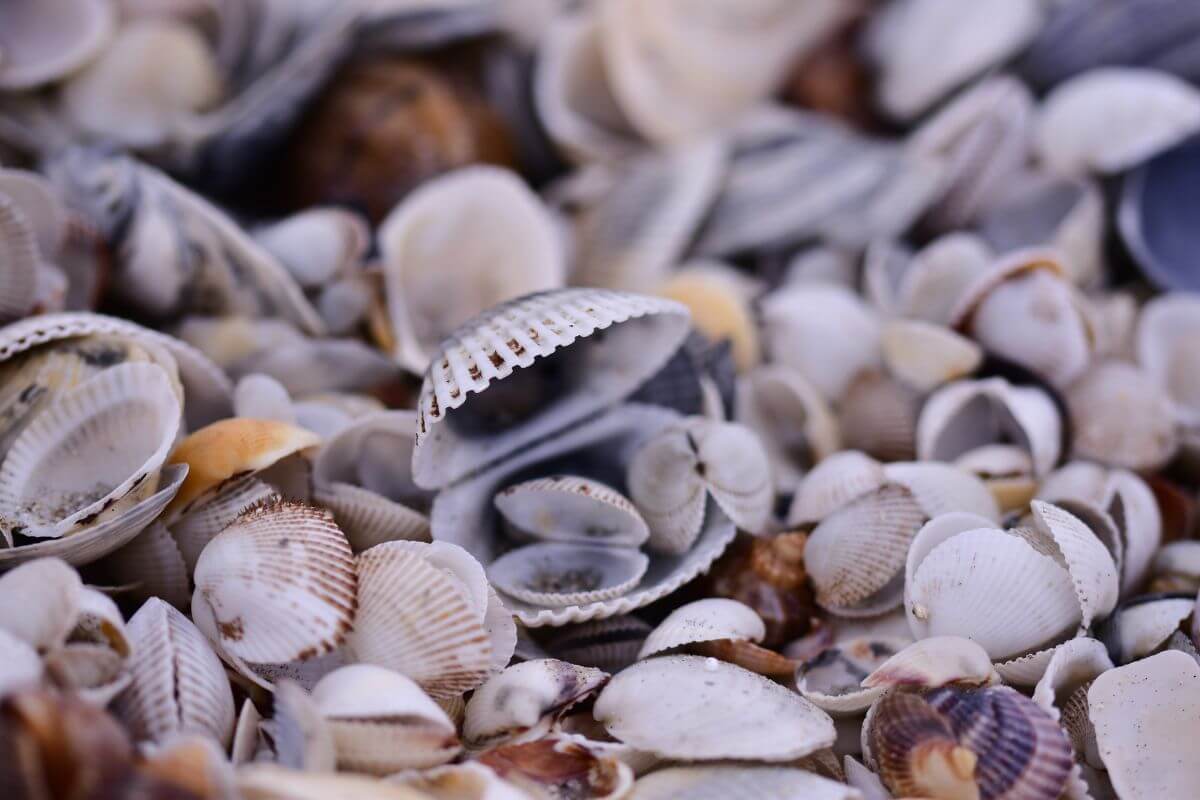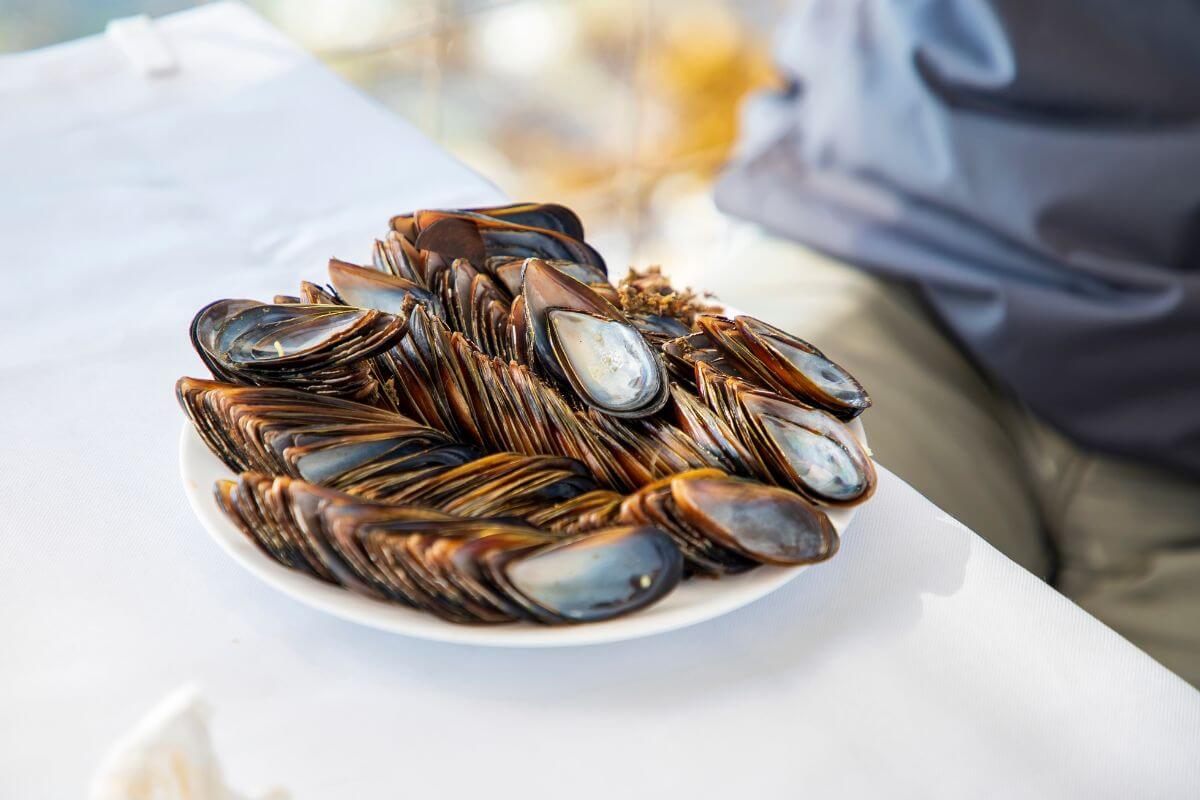Clams are a popular food item in many parts of the world, including North America. But when you dig them up and eat them, you’re probably not thinking about what happens to all those shells afterwards.
You have that compost pile in the yard, doing your part for the environment. So why not combine clam shells and the composting process?
Can you compost clams shells? In this article, we’ll talk about how you can compost clam shells, the benefits of clam shells, and how to prepare the shells before adding them to compost.
- Related article: Composting Complete Guide
Can You Compost Clam Shells?

You can definitely add clam shells to your compost pile. You can compost pretty much anything that is organic matter, and clamshells are no exception. Not only can you compost clamshells, but you should also compost them due to their many benefits. Good news to all you shellfish lovers out there!
Clamshells can be very beneficial in your garden. Their nutrient content makes them ideal for adding to compost, but you can also use them as mulch or fertilizer. You can soak them in water to create a calcium-rich fertilizer or use them as a mulch around flowers or alkaline-loving vegetables.
Use crushed shells for vegetable plants to release the minerals into the soil, or use whole shells as a decorative mulch for borders or potted plants.
Crushed clamshells can also discourage garden pests like slugs and snails and be added to potting mixes to aid drainage.
Benefits of Composting Clam Shells

Clamshells are alkaline and can balance out the pH and acidity of your compost. They contain both carbon (as calcium carbonate) and trace amounts of nitrogen, so they are a great balanced additive for the compost pile.
The nitrogen is stored in the shell within the molecular structure of chitin – an organic polymer – which releases the nitrogen as it breaks down.
Clamshells also contain calcium, which is also essential for plant health. Calcium will improve the nitrate uptake of your plants, strengthen the plant cell walls, and help enzyme formation.
If you have any issues with blossom-end rot, increasing the calcium level can be beneficial. You can even add crushed clam shells directly to the soil around your plants for a calcium-rich mulch.
Besides clamshells, calcium carbonate can also be found in eggshells. Both will add much-needed calcium to the soil.
Preparing Clam Shells for Composting
Whole clamshells can take a long time to break down in compost, so it is important to prepare them correctly before adding them to your compost pile.
- Clean the clamshells thoroughly – If there is any residue or bits of meat still stuck to the shells, these can attract pests to your composter. Also, excess salt can damage your plants, so giving them a good clean will also wash off any salt residue that might still be on the shells.
- Crush the clamshells – The safest and easiest way to do this is to place the shells on a hard surface, cover them with a cloth, like a dish towel. Then smash them with a hammer or large rock. Keep going until they are crushed into gravelly pieces. Sweep them into a bucket. You can put a cloth underneath the clamshells before crushing them to make picking up the shells easier. You just pick up the fabric with the crushed shells inside.
- Add them to your compost bin – Make sure you mix the crushed shells in to ensure they break down quickly. Some gardeners recommend adding them to the center of your pile, and others say they should be composted between two layers of nitrogen-rich materials, like grass clippings and food scraps. Whichever way you add them, they will break down as long as they are mixed in with the compost sufficiently.
Where Can You Get Clam Shells?

Of course, the best way to get clamshells is to cook and eat clams yourself! As long as you clean the shells thoroughly, removing any food residue, leftover clamshells are the best way to obtain them for your compost.
However, if you are not an avid seafood fan, but you still want to reap the benefits of clamshells in your compost, then there are several places you can source these calcium-rich shells.
As clamshells are a waste product, you can easily obtain them from your local seafood restaurant or fishmonger. If you live near the sea, especially if you are by a fishing port, you should have no trouble getting your hands on some clamshells.
If you live inland, wholesale crushed clamshells are available online.
However, any shells can provide similar benefits, including other shellfish shells, eggshells, and snail shells. If you have clamshells, add them to your compost, but you don’t need to go out of your way to get them.
The best thing about making your own compost is that it is free, so there is no real need to buy clamshells when you can use whatever materials you have available to you.
One way you should not collect clamshells is from the beach. Shells are essential for the ecosystem, and excessive shell collection has many detrimental effects. There are many other ways to obtain clam shells that would otherwise be discarded.
Can You Compost Clams?
Composting clam meat depends entirely on your method of composting. If you have a traditional outdoor composter, then adding whole clams can attract pests.
However, if you are using a sealed hot composter, the Compot system, or a fermentation composting process such as the Bokashi system, then you will be able to add clam meat to your compost.
If you have a traditional composter and want to compost clam meat, then make sure you limit the amount of clams. Bury the clam meat in the center of your compost to prevent it from attracting any unwanted animals.
Compost Clamshells Final Thoughts
Clamshells are one of the most beneficial items you can include in your compost heap. They help improve soil structure, are a good source of calcium content, help to balance acidic compost, increase water retention, and boost fertility.
Check out these other composting articles you may be interested in:

